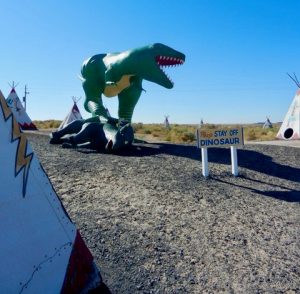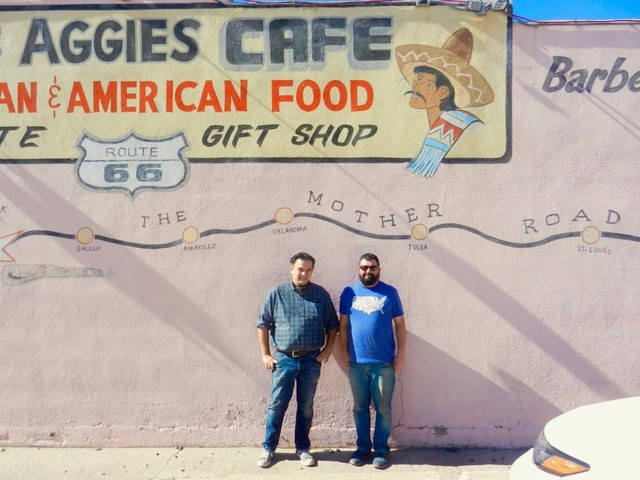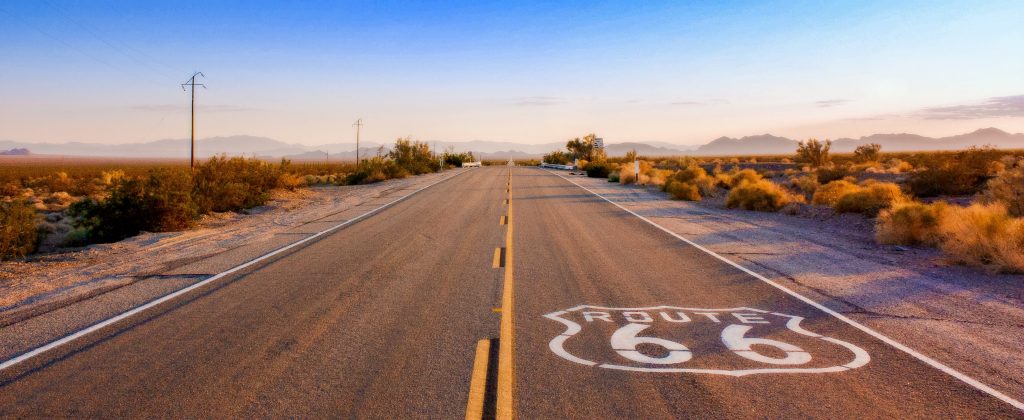While Route 66 is well known for its iconic diners and gas stations, roadside attractions and highway signs, a new project aims to celebrate a lesser-known aspect often found across the tracks or a few blocks off of America’s main street: its diversity.
The Shades of Route 66 in Arizona: Celebrating Diversity along Arizona’s Historic Route 66 at Northern Arizona University’s Cline Library will explore, document and share stories, voices and images of underrepresented people and communities who contributed to the diverse cultural and socioeconomic landscape along the road in Arizona. The final product, a freely available “StoryMap” educational online exhibit, will provide a more well-rounded story of historic Route 66 in the state for educators and users from around the world.
“Creating an inclusive and diverse environment is a strategic goal for both NAU and Cline Library,” said principal investigator Peter Runge, head of Special Collections and Archives at the library. “Shades of Route 66 in Arizona is an intentional effort to honor communities that have historically been overshadowed by the dominant perspective.”
The project is also providing unique experiential learning opportunities to interns Lazarus Melan, a documentary filmmaker studying in NAU’s School of Communication, and Ivan Pacheco, a retired dentist now working on a fine arts degree at NAU.

The interns will develop the project under the guidance of Runge; Cline Library archivist and project director Sean Evans; and subject experts Ricardo Guthrie, associate professor in the Department of Ethnic Studies at NAU, and Mark Manone, chair of NAU’s Department of Geography and Planning. Along the way the interns will develop their skill with historical research methodologies, synthesis of information, digital storytelling and more.
Primary source collections in Special Collections and Archives are the foundation for the interns’ research. Examples include the Los Recuerdos del Barrio en Flagstaff and the African American Pioneers of Flagstaff oral history projects; the Fronske Studio and John Running photograph collections; and the records of the Historic Route 66 Association of Arizona.
The interns will also use the Green Book, phone books and reverse directories and newspapers to identify businesses that were run by or served a diverse clientele on or near Route 66.
Melan and Pacheco have already been on the road—literally—with Evans, a highly regarded Route 66 historian. A series of field trips for primary source collection will begin to fill in gaps in areas that have been traditionally underrepresented or undocumented. The field trips also will offer opportunities to develop relationships and trust with communities whose stories have not historically been actively collected and documented. Along the way, the project team hopes to identify people along Route 66 whose stories are especially relevant to this project and conduct oral histories with them.

The interns have also been doing a deep dive into related history and culture with Guthrie, who has been guiding them to think critically and broadly about diversity within the context of Route 66 in Arizona. Guthrie, who brings years of teaching and researching in the area of communicating diversity through the written and spoken word to the project, has the members of the project team reading Matt Ruff’s “Lovecraft Country,” which may be fantastical fiction but also provides a good immersion into the culture and politics of race and travel along America’s highways.
Later in the project, Manone will work with the interns on ArcGIS web mapping software, which they’ll use to develop the StoryMap. Both interns anticipate graduating in May 2022.

Shades of Route 66 in Arizona was inspired by the Los Angeles Public Library project titled Shades of L.A.: A Search for Visual Ethnic History. Evans hopes their project, which was funded in large part by a grant from the Historic Route 66 of Arizona Association, will inspire others to explore, examine and expand the history of the
Mother Road.
“Upon completion of the project, we will share the online exhibit on our website and with our colleagues in the National Park Services Route 66 Corridor Preservation Program, who will link it from theirs, too,” Evans said. “We hope this project will become a model for similar projects in the other seven Route 66 states.”
In keeping with the project’s focus on inclusion, if you have questions or suggestions for the Shades of Route 66 project team, share them via email at special.collections@nau.edu.
Laura Rose Taylor | Cline Library




